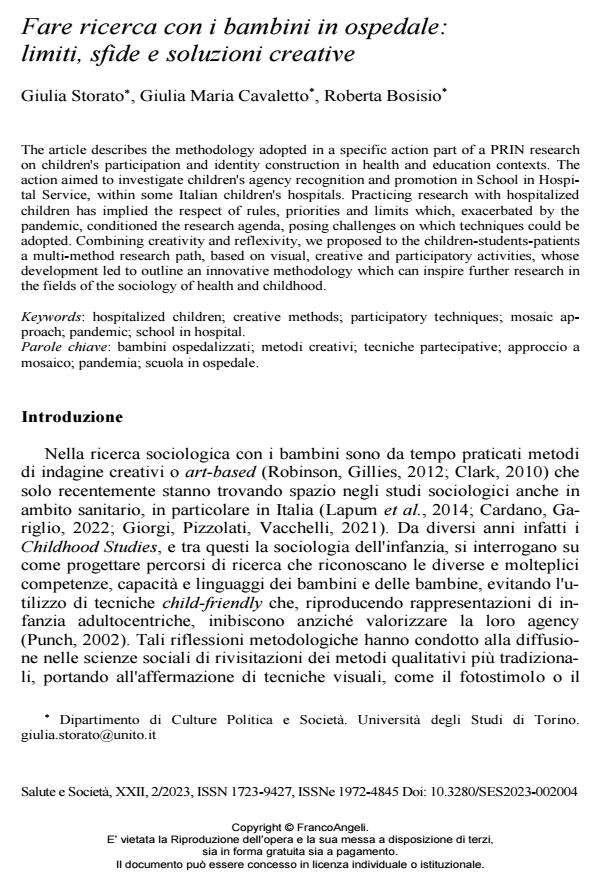Fare ricerca con i bambini in ospedale: limiti, sfide e soluzioni creative
Journal title SALUTE E SOCIETÀ
Author/s Giulia Storato, Giulia Maria Cavaletto, Roberta Bosisio
Publishing Year 2023 Issue 2023/2
Language Italian Pages 11 P. 29-39 File size 390 KB
DOI 10.3280/SES2023-002004
DOI is like a bar code for intellectual property: to have more infomation
click here
Below, you can see the article first page
If you want to buy this article in PDF format, you can do it, following the instructions to buy download credits

FrancoAngeli is member of Publishers International Linking Association, Inc (PILA), a not-for-profit association which run the CrossRef service enabling links to and from online scholarly content.
The article describes the methodology adopted in a specific action part of a PRIN research on children's participation and identity construction in health and education contexts. The action aimed to investigate children's agency recognition and promotion in School in Hospi- tal Service, within some Italian children's hospitals. Practicing research with hospitalized children has implied the respect of rules, priorities and limits which, exacerbated by the pandemic, conditioned the research agenda, posing challenges on which techniques could be adopted. Combining creativity and reflexivity, we proposed to the children-students-patients a multi-method research path, based on visual, creative and participatory activities, whose development led to outline an innovative methodology which can inspire further research in the fields of the sociology of health and childhood.
Keywords: hospitalized children; creative methods; participatory techniques; mosaic ap- proach; pandemic; school in hospital.
Giulia Storato, Giulia Maria Cavaletto, Roberta Bosisio, Fare ricerca con i bambini in ospedale: limiti, sfide e soluzioni creative in "SALUTE E SOCIETÀ" 2/2023, pp 29-39, DOI: 10.3280/SES2023-002004